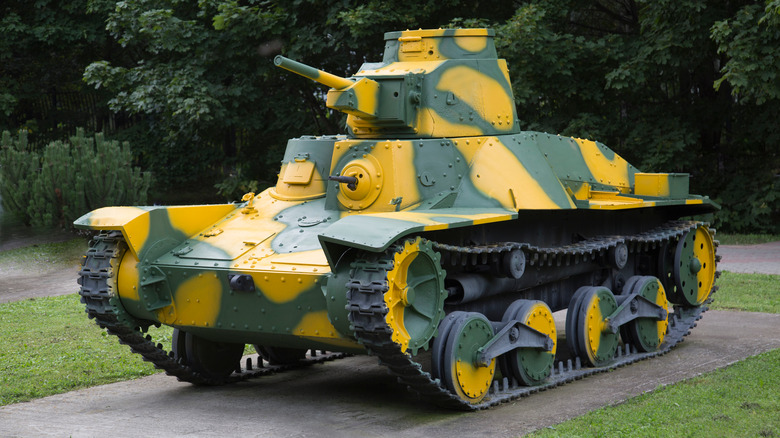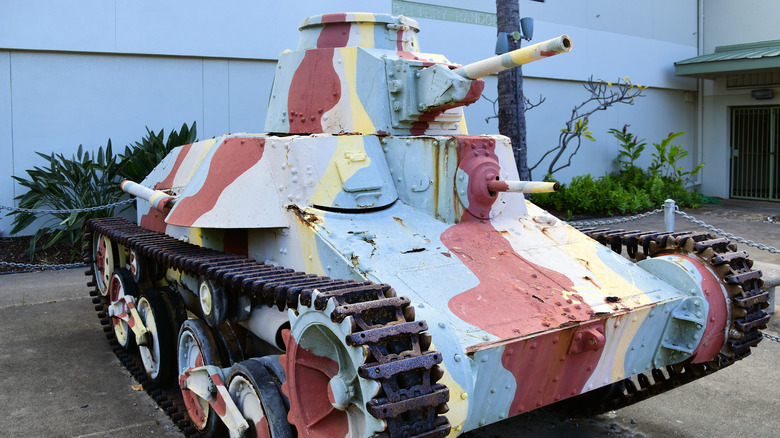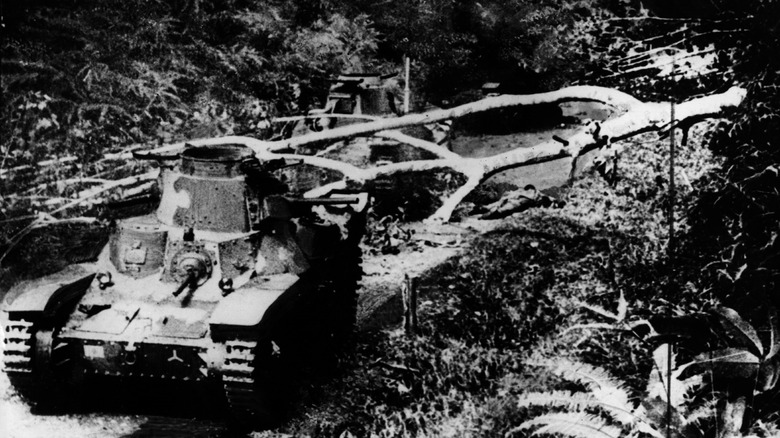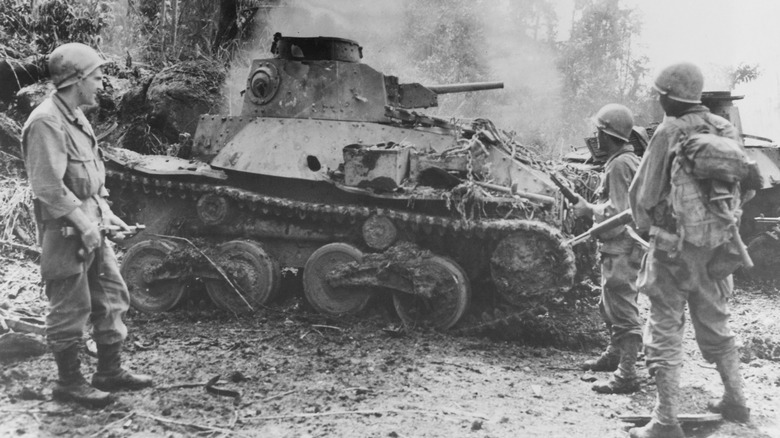Everything To Know About The Type 95 Ha-Go Light Tank
Through the early 1900s and up until the official outbreak of World War II, the Japanese military slowly but surely built up its stock of armaments. After successfully proving that the country could make its own tanks with the development of the Type 87 Chi-I, Japanese military engineers continued to iterate on the concept of infantry vehicles with that model's subsequent versions.
The big problem that they hit upon was that while the later versions of Japan's tanks could keep up with mechanized corps, it was only just barely. They needed a tank that was fast enough to keep pace with the mechanized infantry force while still powerful enough in both offense and defense to pose a genuine threat to its opponents. It was this need that ultimately gave rise to the Type 95 Ha-Go light tank, a tank that would become one of the hallmarks of the Japanese military during World War II.
Creating a more mobile tank
In the early 1930s, wholly domestic tank production in Japan was already in full swing, with the model of choice at the time being the Type 89 I-Go. As of 1933, Japan had formed its first mechanized division, packed full of these tanks, which rolled alongside infantry units. The problem was that, compared to many other tanks that were emerging at the time, the Type 89 was on the slower side.
This made it difficult for it to keep up with and support the infantry. Surprisingly, this wasn't seen as a pressing issue by the High Command of the Imperial Japanese Army, but for those on the ground, there was a growing need for a more mobile vehicle. So, independent of Command's orders, the Army's Technical Headquarters began gathering information for a prototype.
This prototyping process ran quietly from 1933 to 1938, going through several iterations to meet the demands of both operators and infantry. The result was a compact tank weighing around 7 tons with just enough space to fit an operating crew, including three men.
The tank was equipped with a 46-caliber Type 98 37 mm gun for its main armament, supplemented by a pair of Type 97 machine guns strategically placed at the front and rear. Following a promising test run during a conflict with China in 1937, the prototype was given the go-ahead for mass production in 1938, christened with the name Type 95 Ha-Go.
The Type 95 in action
In 1939, only a year after the Type 95 Ha-Go began mass production, World War II officially began, with its first official appearance being at the Battles of Khalkhin Gol. Compared to the lighter vehicles employed by the Soviet 914th Motor Rifle Regiment and 9th Mechanized Brigade, the Type 95 Ha-Go units utilized by the Japanese 3rd Tank Regiment were more heavily armed.
In their support of the 7th Infantry Division, the Tank Regiment assaulted the Soviet line, destroying 32 of their tanks and capturing 35 armored vehicles. However, Japan ultimately lost this encounter, with 42 of its tanks lost or destroyed in the process.
Despite the loss, the Type 95 continued to be the primary tank for the Japanese Armed Forces, up to and including conflicts with the United States Military in 1941. The tank made appearances in conflicts in The Philippines, Malaya, and Burma, going head-to-head with the Allied M3 Stuarts.
While the Allied tanks were more heavily armored, their operating crews had comparatively less battlefield experience than the Japanese Regiments, leading to casualties. The Type 95 proved especially dangerous in dense, tropical environments, with its relatively high speed and low profile allowing it to burst through the brush for ambush attacks.
The end of the Type 95 Ha-Go
As World War II reached its climax, the Allied forces began to adapt to the Type 95's strengths, punching through its lighter armor with heavy weaponry like anti-tank rifles and bazookas. The United States Marines had also begun to utilize its newest tank and one of the best Allied tanks of WWII, the M4 Sherman, armed with 90 mm-thick armor plating and a 75 mm main gun, more than enough to both withstand the Type 95's attacks and respond in kind. As the Japanese forces were pushed back, nearly every deployed Type 95 was destroyed by an M4 Sherman or otherwise captured by the Allied forces.
The last time the Type 95 was seen in World War II was during the Soviet invasion of Manchuria in 1945, right near the end of the war, a conflict that was ultimately lost to the Soviet forces and their distinctively sloped T-34-85 tanks. Following the official end of the war in 1945 and the American occupation of Japan, the Imperial Japanese Armed Forces was dissolved. Japan would not use the Type 95s again after this point, though the tanks did still make several appearances after the war, with captured units utilized by a handful of foreign militaries.



